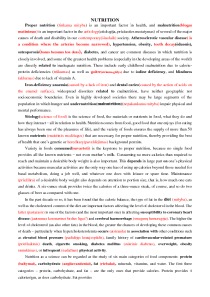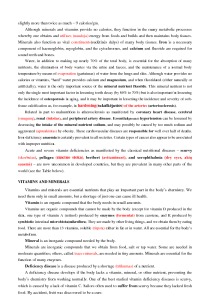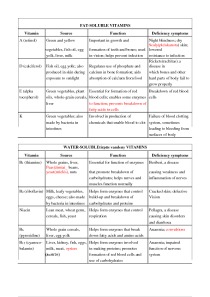Nutrition And Herbal Medicine



Nutrition proper nutrition. Malnutrition blogas matinimas. Goitre striuma gūžys. Iron deficiency anaemia. Undernutrition malnutrition )(. Susceptibility to coronary heart disease. Elevated blood pressure. Cardiovascular related premature. Cigarette smoking , diabetes mellitus. Overweight , obesity. Protein baltymai , carbohydrate angliavandeniai , fat riebalai. Mineral nutrient fluoride. Hardening sukalkėjusios of the arteries arteriosclerosis. Peripheral artery disease. Essential pirminė hypertension. The intake of the mineral nutrient sodium. Pellagra niacino stoka , beriberi avitaminozė , and xerophthalmia dry eyes , akių sausmė. Vitamins and minerals. Fat soluble vitamins. Vitamin Source Function. Water solubletirpūs vandeny vitamins. Combining form Meaning Term. Noun Verb Adjective. Eating disorders anorexia and bulimia. Raw Food Diet. Cooking food can diminish its nutritional value. For example , the cancer fighting compounds in broccoli are greatly reduced when broccoli is cooked. Other foods , however , become more healthful after cooking , because the fibrous portion is broken down. It is also low. These properties are associated with a reduced risk of diseases such as heart disease , diabetes , and cancer. Too much acidity in the body is thought to result in disease. Supplementing with a multivitamin may help prevent nutritional deficiencies. Explain the following terms in English. Translate the following into English.
Proper nutrition (tinkama mityba) is an important factor in health, and malnutrition(blogas matinimas) is an important factor in the aetiology(etiologija, priežasties nustatymas) of several of the major causes of death and disability in our contemporary(šiuolaik) society. Atherosclerotic vascular disease( is a condition where the arteries become narrowed), hypertension, obesity, tooth decay(ėduonis), osteoporosis(bones becomes less dens), diabetes, and cancer are common diseases in which nutrition is closely involved, and some of the greatest health problems (especially in the developing areas of the world) are directly related to inadequate nutrition. These include early childhood malnutrition due to calorie-protein deficiencies (trūkumas) as well as goitre(striuma,gūžys) due to iodine deficiency, and blindness (aklumas) due to lack of vitamin A.
Iron-deficiency anaemia(caused by a lack of iron) and dental caries(caused by the action of acids on the enamel surface), widespread disorders related to malnutrition, have neither geographic nor socioeconomic boundaries. Even in highly developed societies there may be large segments of the population in which hunger and undernutrition(malnutrition)(nepakankama mityba) impair physical and mental performance.
Sitology(science of food) is the science of food, the materials or nutrients in food, what they do and how they interact – all in relation to health. Nutrition comes from food, good food that one enjoys (for eating has always been one of the pleasures of life), and the variety of foods ensures the supply of more than 50 known nutrients (maistinės medžiagos) that are necessary for proper nutrition, thereby providing the best of health that one’s genetic or hereditary(paveldėjimas) background permits.
Variety in foods consumed(suvartoti) is the keystone to proper nutrition, because no single food provides all the known nutrients – not even mother’s milk. Consuming no more calories than required to reach and maintain a desirable body weight is also important. This depends in large part on one’s physical activities because muscular activities are the only way one has of using up calories beyond those needed for basal metabolism, doing a job well, and whatever one does with leisure or spare time. Maintenance (priežiūra) of a desirable body weight also depends on attention to portion size, that is, how much one eats and drinks. A six-ounce steak provides twice the calories of a three-ounce steak, of course, and so do two glasses of beer as compared with one.
In the past decade or so, it has been found that the caloric balance, the type of fat in the diet (mityba), as well as the cholesterol content of the diet are important factors affecting the level of cholesterol in the blood. The latter (pastarasis) is one of the factors (and the most important one) in affecting susceptibility to coronary heart disease (jautrumas koronarinei širdies ligai?) and cerebral haemorrhage (smegenų hemoragija). The higher the level of cholesterol (an also other fats) in the blood, the greater the chances of developing these common causes of death – particularly when hypercholesterolemia occurs (atsiranda) in association with other conditions such as elevated blood pressure (padidėjęs kraujospūdis), family history of cardiovascular-related premature (priešlaikinis) death, cigarette smoking, diabetes mellitus (cukrinis diabetas), overweight, obesity (nutukimas), or infrequent (nedažnas) physical activity.












